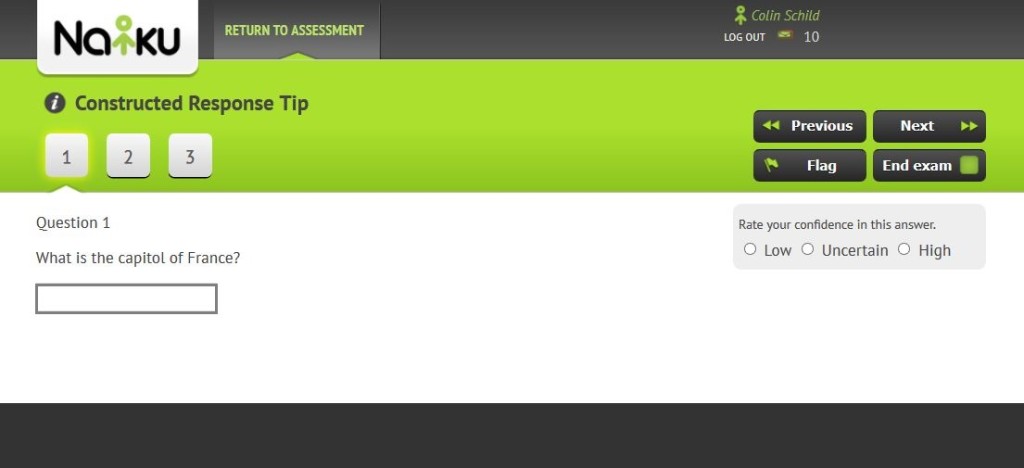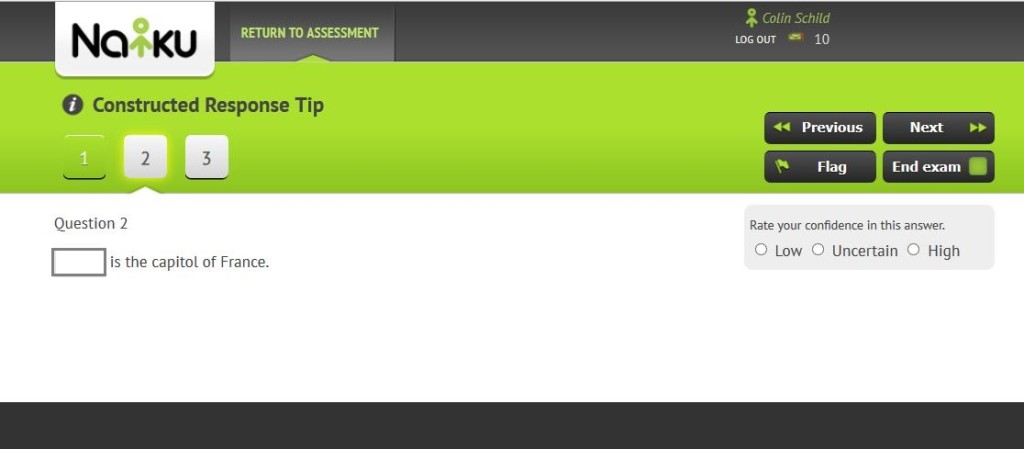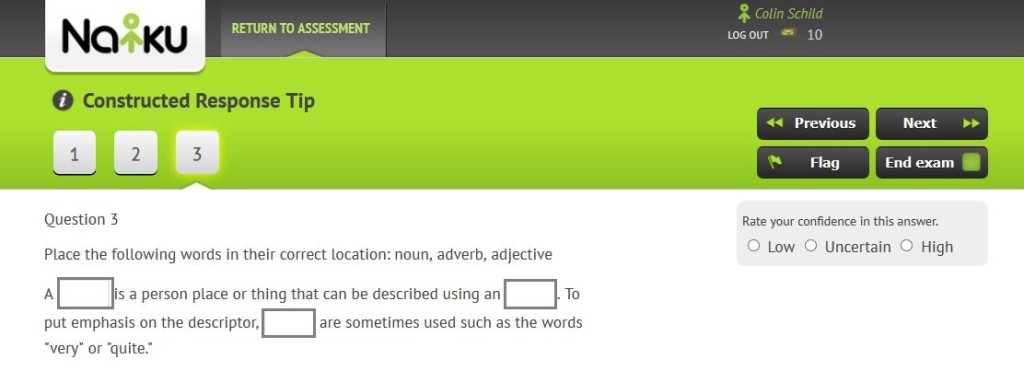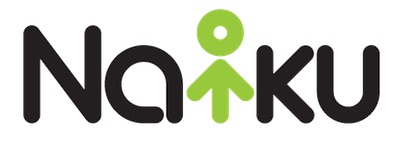As a middle school math teacher, my go-to assessment item type was constructed response. I loved the item for its ability to be created quickly compared to thinking through multiple-choice answers and the freedom it gave me to get a better understanding of student learning and misconceptions. There are a few ways to customize the constructed-response item type in Naiku to make this item even more helpful. I’ll show three examples to demonstrate some of the ways you can upgrade your constructed-response items.
BASIC QUESTION
The first example (above) is the run-of-the-mill constructed-response question. Type in the question stem, add a matcher for scoring and voilà, you have a constructed-response question.The question appears at the top and there is a large blank where students can put their answer below the question. The example above asks for the capital of France. Note that for this question, I checked the case-sensitive box because I want the answer to be capitalized.
IN LINE CONSTRUCTED RESPONSE
The second option adds a little more flair. In this case, I added the underscores in the stem of the question. These underscores are a place holder for a constructed-response blank. Now, instead of have the question followed by the blank, the blank is incorporated into the question which forces students to not just use their memories, but also context clues to understand what information needs to be recalled. In one simple step, your question just increased one level on Bloom’s level of questioning.
MULTIPLE BLANK CONSTRUCTED RESPONSE
The third option uses this nice feature of having constructed-response blanks in the question itself by giving students multiple words that they need to choose from, read the context of the question, and then place in the correct position. This can be used with vocabulary as shown here with parts of speech, or for more complicated things like correctly conjugating verbs in a foreign language class.
To see the quiz I created for this post, search for “Constructed Response Tip” in the assessments tab of Naiku (or click on the link after you have signed in to Naiku).
 Naiku Quick Tip is a weekly blog by Naiku Teacher Support Representative Mr. Colin Schild, who taught mathematics for grades 5-8 for the past four years. Colin now works to help teachers create more effective and efficient classroom assessment practices. You can reach him at colins@naiku.net or at support@naiku.net.
Naiku Quick Tip is a weekly blog by Naiku Teacher Support Representative Mr. Colin Schild, who taught mathematics for grades 5-8 for the past four years. Colin now works to help teachers create more effective and efficient classroom assessment practices. You can reach him at colins@naiku.net or at support@naiku.net.

